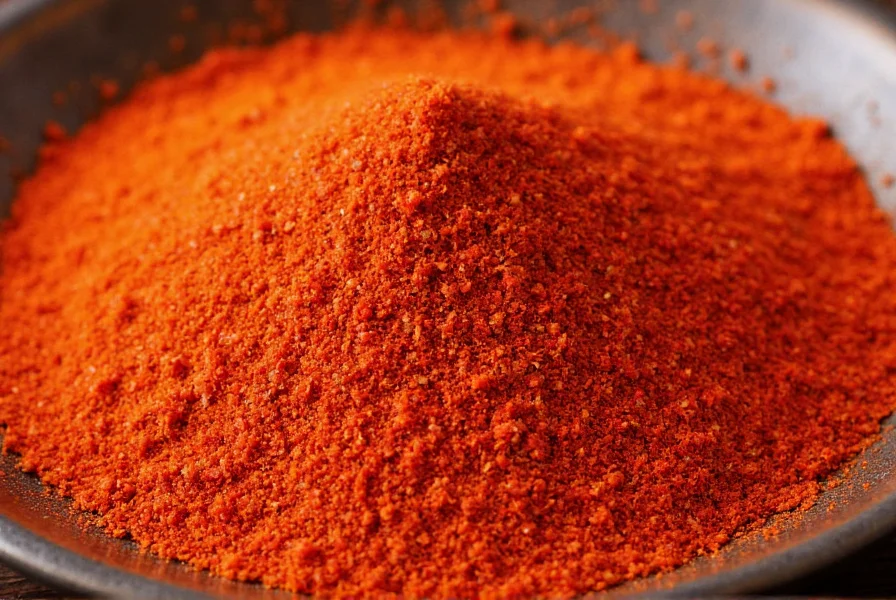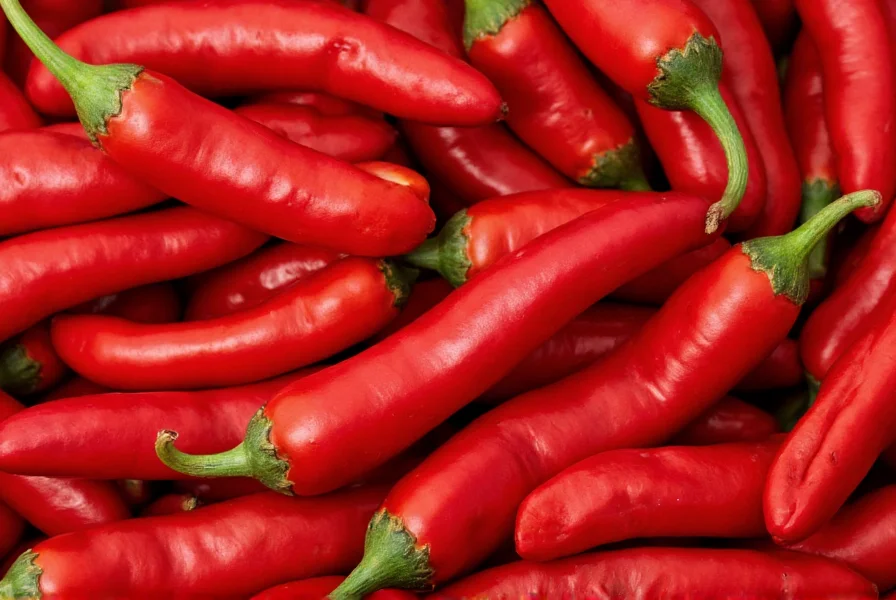Korean red pepper, or gochugaru, isn't just another chili powder—it's the vibrant heart of Korean culinary tradition. Unlike standard cayenne or paprika, authentic gochugaru delivers a complex flavor profile that balances moderate heat with subtle sweetness and earthiness. This distinctive ingredient transforms ordinary dishes into authentic Korean experiences, from the fiery depths of kimchi to the rich complexity of tteokbokki.
Understanding the nuances of Korean red pepper is essential for anyone exploring Korean cooking. The quality and type you select directly impact the authenticity of your dishes. Let's explore what makes this ingredient so special and how to use it properly in your kitchen.
What Exactly Is Korean Red Pepper (Gochugaru)?
Gochugaru refers specifically to the dried and ground red peppers from the Capsicum annuum family, traditionally grown in Korea. These peppers undergo a meticulous sun-drying process that concentrates their flavor while preserving their vibrant red color. Unlike many Western chili powders that use hotter varieties, Korean red peppers are cultivated for balanced flavor rather than extreme heat.
There are two primary forms you'll encounter:
| Type | Texture | Primary Use | Flavor Characteristics |
|---|---|---|---|
| Coarse Gochugaru | Rough flakes | Kimchi, soups, stews | Bright, fresh pepper flavor |
| Fine Gochugaru | Smooth powder | Gochujang, marinades, sauces | Deeper, more concentrated flavor |
Flavor Profile and Heat Level Explained
One of the most common misconceptions about korean red pepper is that it's extremely hot. In reality, authentic gochugaru has a moderate heat level—typically between 1,500-4,000 Scoville Heat Units. For comparison, cayenne pepper ranges from 30,000-50,000 SHU, making gochugaru significantly milder.
The magic of korean red pepper lies in its complex flavor profile that includes:
- A subtle natural sweetness
- Earthy, almost smoky undertones
- Fruity notes reminiscent of dried cherries
- A clean heat that builds gradually
This balanced profile explains why korean red pepper for kimchi works so well—it provides enough heat to preserve while allowing other flavors to shine through. The sun-drying process crucial to traditional preparation develops these nuanced flavors that artificial substitutes simply can't replicate.
Essential Culinary Applications
Korean red pepper isn't just for heat—it's a foundational flavor component in countless Korean dishes. Understanding how to use gochugaru properly separates authentic preparations from imitations.
Traditional Uses in Korean Cuisine
The coarse variety of korean red pepper flakes is indispensable for:
- Kimchi preparation—the coarse texture helps the pepper adhere to vegetables
- Stews and soups like kimchi jjigae and budae jjigae
- Marinades for meats, particularly in dishes like dakgalbi
The fine powder version serves different purposes:
- Gochujang production—combined with fermented soybeans and glutinous rice
- Sauces and dressings where smooth texture is essential
- Rubbed on meats before grilling for even flavor distribution
Nutritional Benefits Beyond Flavor
Beyond its culinary importance, korean red pepper nutritional benefits make it a valuable addition to your pantry. These peppers contain significant amounts of:
- Vitamin C (higher than bell peppers due to the drying process)
- Vitamin A in the form of beta-carotene
- Antioxidants including capsaicinoids
- B vitamins that support metabolism
Research suggests that regular consumption of moderate-heat peppers like gochugaru may support:
- Metabolic health through thermogenesis
- Cardiovascular function
- Digestive system regulation
- Immune system support
Selecting and Storing Authentic Gochugaru
Not all korean red pepper products are created equal. When shopping for authentic gochugaru, look for these quality indicators:
- Vibrant red color—avoid dull or brownish powders
- Fresh aroma—should smell sweet and slightly smoky, not musty
- Origin labeling—Korean-grown is preferable
- No additives—pure gochugaru contains only peppers
Proper storage is crucial for maintaining quality. Store your korean red pepper in an airtight container away from light and heat. For maximum freshness, keep it in the refrigerator where it will maintain optimal flavor for 6-12 months. Freezing extends shelf life to 18-24 months without significant flavor degradation.
Substitutes When Authentic Gochugaru Isn't Available
Finding a perfect substitute for korean red pepper can be challenging, but these alternatives work in a pinch:
- Smoked paprika + cayenne (10:1 ratio)—provides similar color and some smokiness, though missing the distinctive sweetness
- Aleppo pepper—closer heat level but different flavor profile
- Guajillo chili powder—moderate heat with fruity notes
When using substitutes for korean red pepper in kimchi, add 1/4 teaspoon of sugar per cup of substitute to approximate gochugaru's natural sweetness. Remember that no substitute perfectly replicates authentic gochugaru's unique flavor balance—considering where to buy authentic gochugaru might be worth the effort for serious Korean cooking.
Mastering Korean Red Pepper in Your Cooking
To get the most from your gochugaru, follow these professional tips:
- Bloom in oil—gently heat gochugaru in sesame or vegetable oil for 1-2 minutes to release flavors before adding to dishes
- Layer flavors—add coarse gochugaru early in cooking for base flavor, fine powder later for brightness
- Balance with sweetness—traditional Korean cooking often pairs gochugaru with small amounts of sugar or fruit
- Adjust for freshness—older gochugaru loses potency; increase quantity slightly if your container is more than 6 months old
When experimenting with korean red pepper heat level in recipes, start with less than you think you need—you can always add more, but you can't remove it once incorporated. The heat develops over time, especially in fermented dishes like kimchi.

Understanding the difference between gochugaru and regular chili powder is crucial—while both provide heat, gochugaru offers a complex flavor profile that standard chili powders lack. This distinction becomes especially apparent in traditional dishes where gochugaru isn't merely a heat source but a fundamental flavor component.

Conclusion: Embracing the Heart of Korean Flavor
Korean red pepper represents more than just an ingredient—it's a cultural touchstone that connects modern cooks with centuries of culinary tradition. By understanding its unique properties, proper usage, and authentic characteristics, you unlock the door to genuinely flavorful Korean cooking.
Whether you're making your first batch of kimchi or perfecting your tteokbokki recipe, the quality of your gochugaru makes all the difference. Take the time to source authentic korean red pepper, store it properly, and use it with intention—your dishes will reflect the care and respect for this remarkable ingredient.











 浙公网安备
33010002000092号
浙公网安备
33010002000092号 浙B2-20120091-4
浙B2-20120091-4